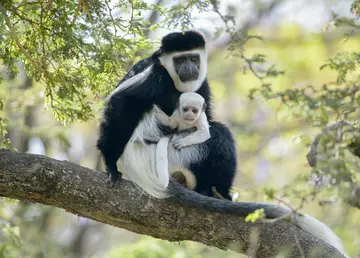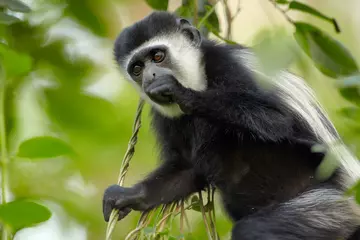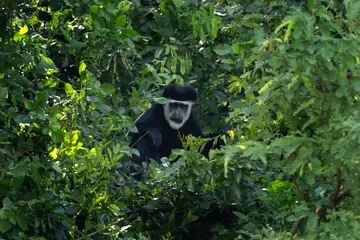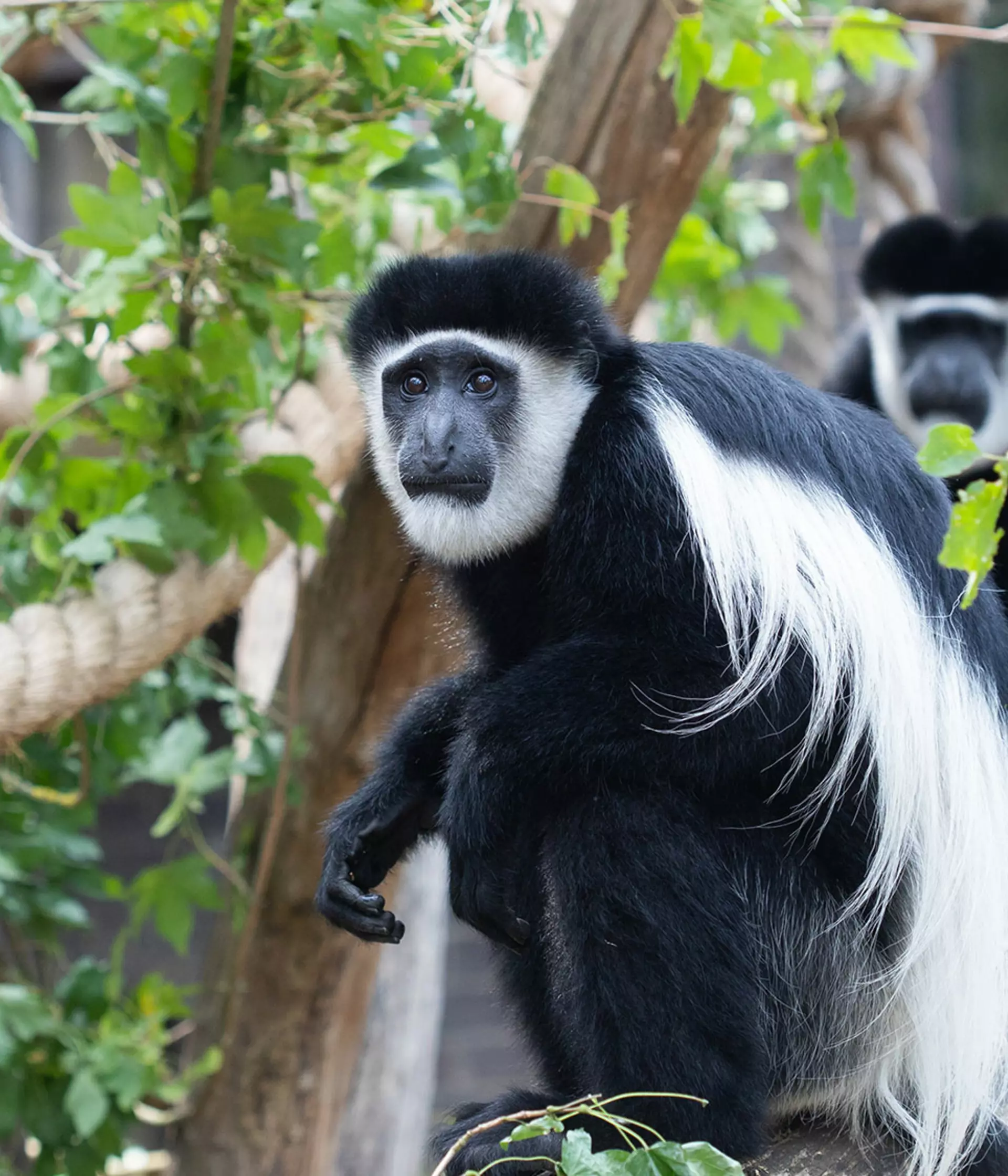
This August, Monkey Valley opens at London Zoo – the first colobus monkey walkthrough in the UK! To whet your appetite ahead of the big opening, Primate Keepers Jacob Winfield and Christina Stender share some facts about colobus monkeys that you might not have known.
1. Their babies are born completely white.
Besides looking like adorable baby ghosts, this colour difference serves an important function for the youngsters. It’s thought that their white fur helps the wider group look after them and spot among the leaves. The white fur may even help to stimulate a behaviour called ‘alloparenting’ in the wider colobus monkey troop – a term that refers to when other females help to raise the infant as well as its biological mother. Raising little monkeys can be a tiring business, so colobus make it a team effort.

2. Colobus comes from the Ancient Greek word kolobós and translates as ‘the mutilated one’.
Never fear though, this just refers to the colobus monkey’s thumb – or rather their lack of thumb! Colobus monkeys are one of the only primates without a thumb. Or at least they appear to have no thumb, the thumb bone is just so small that it looks like they only have four fingers. It’s thought that, because colobus monkeys only eat leaves, they might have evolved without thumbs, unlike other primates who specialise in eating fruit or insects that require more dexterity!

3. Their black and white hair is actually a cunning disguise.
They might look a little overdressed for jungle life to us, but their incredible coats in fact help to camouflage them from predators. It’s a strategy called ‘disruptive colouration’ and means that their black and white hair helps to break up their outline against the foliage – making it hard for predators like eagles and leopards to spot them. It’s the same strategy zebras use to blend into the grassy savannah and evade lions!

4. They have something in common with cows – their stomachs!
Colobus monkeys have four-chambered stomachs, that help them break down and digest the nutrients in leaves, a bit like a Jersey cow has several stomachs to help them digest grass. Colobus monkeys are strict leaf-eaters and can digest toxic leaves that would make another primate sick. It also has another added benefit; while most primates are forced to wander from tree to tree throughout the jungle looking for fruit to eat, colobus monkeys can stick to one territory and defend it.

5. They have an appetite for a very unusual snack…
Soil. Yes, you read that right, soil – we bet you didn’t know that one! Colobus spend most of their lives in the trees (unlike baboons who spend a lot of the time on the ground) but when they do come down it’s sometimes to chew on a mouthful of soil. Studies have shown that colobus monkeys will choose clay-rich soil over other soils, and it’s thought that the clay helps them to digest the toxins in the contained in the leaves they eat. The soil in Monkey Valley has been specially selected to meet our colobus monkeys’ taste!
Gold members, Fellows and Patrons receive articles like this one three times a year in our Wild About magazine. To get your paws on the next edition become a Gold Member today.
